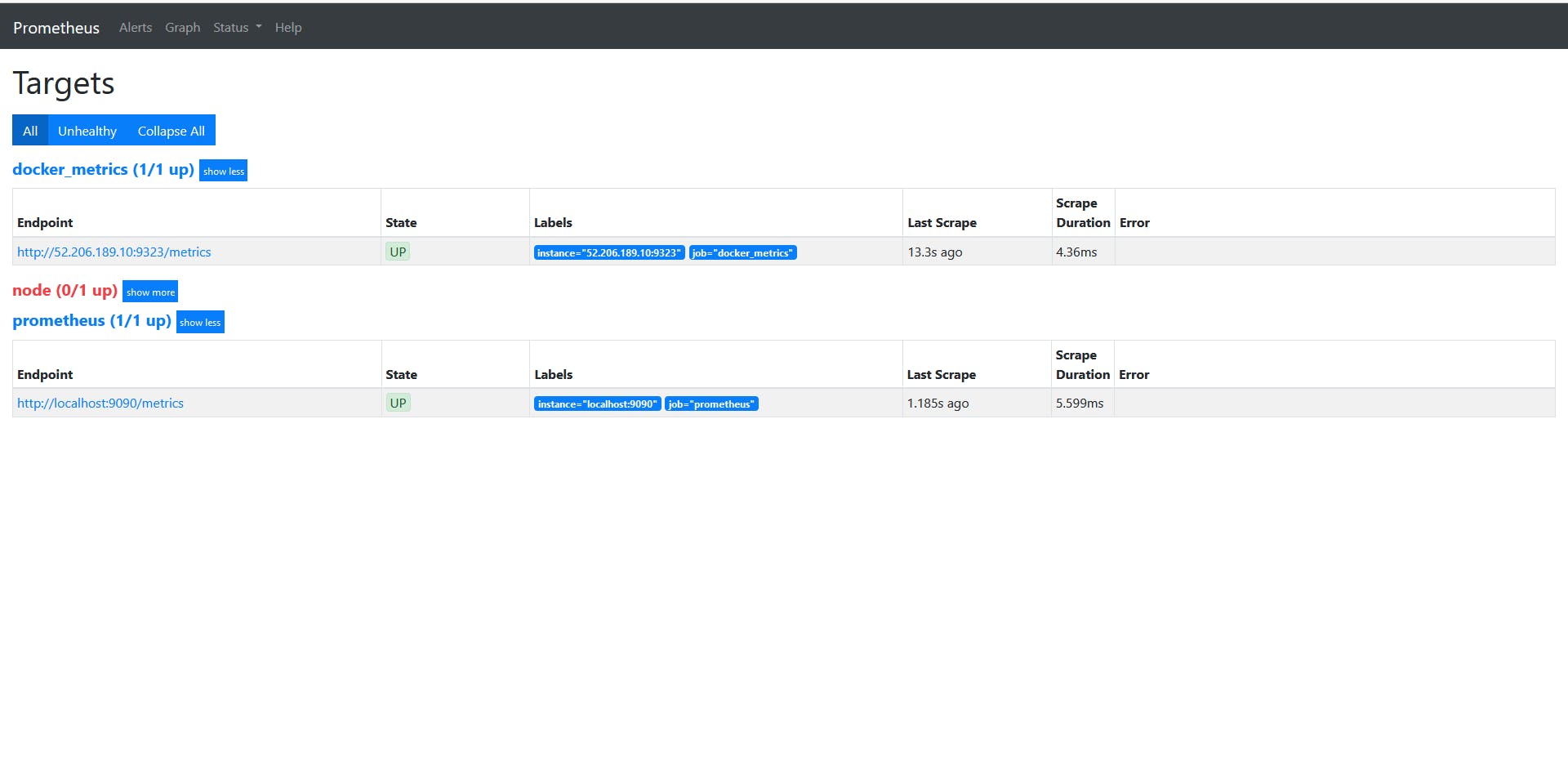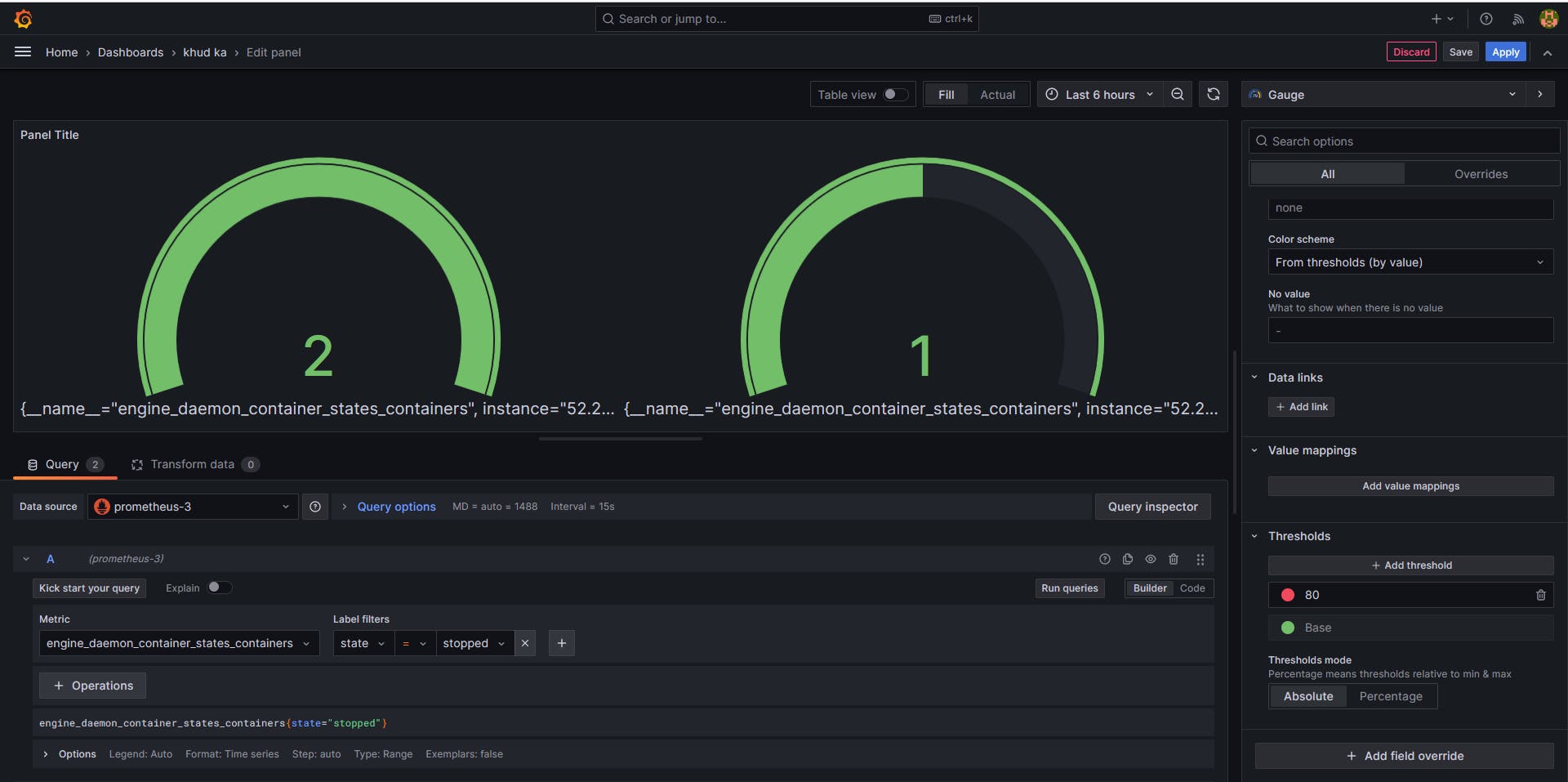Monitoring Docker Logs Using Grafana and Prometheus
 Ashwin
AshwinIntroduction
In this comprehensive tutorial, we'll guide you through the process of sending Docker logs to Grafana for effective monitoring and visualization. This setup involves launching two EC2 instances, installing Grafana on Instance 1, and Prometheus with Docker on Instance 2. By the end of this guide, you'll have a fully functional Grafana dashboard displaying Docker container metrics.
Prerequisites
AWS account with EC2 instances
Basic knowledge of Linux commands
SSH access to both EC2 instances
Step 1: Launch EC2 Instances
Launch two EC2 instances on AWS, naming them Instance 1 and Instance 2. Ensure you have the necessary security groups, key pairs, and IAM roles configured for smooth communication.
Step 2: Install Grafana on Instance 1
SSH into Instance 1 and install Grafana using the following commands:
sudo apt-get update
sudo apt-get install -y software-properties-common
sudo add-apt-repository "deb https://packages.grafana.com/oss/deb stable main"
wget -q -O - https://packages.grafana.com/gpg.key | sudo apt-key add -
sudo apt-get update
sudo apt-get install -y grafana
sudo systemctl start grafana-server
sudo systemctl enable grafana-server
Access Grafana's web interface by navigating to http://<instance_1_ip>:3000 in your browser. Default login credentials are usually admin/admin.
Step 3: Install Prometheus and Docker on Instance 2
SSH into Instance 2 and install Prometheus and Docker:
sudo apt-get update
sudo apt-get install -y prometheus docker.io
Step 4: Configure Docker Metrics Collection
Create a file named daemon.json in /etc/docker/ with the following content:
{
"metrics-addr": "0.0.0.0:9323",
"experimental": true
}
Restart Docker:
sudo systemctl restart docker
You should now see your docker metrics by going to <instance_2_ip>:9323/metrics.

Step 5: Configure Prometheus for Docker Metrics
Edit the prometheus.yml file in /etc/prometheus/ and add a new job:
- job_name: 'docker_metrics'
static_configs:
- targets: ['<instance_2_ip>:9323']
Restart Prometheus:
sudo systemctl restart prometheus
Verify the new job is visible in Prometheus targets.

Step 6: Configure Grafana Data Source
Log in to Grafana.
Navigate to "Settings" > "Data Sources."
Click "Add your first data source" and select Prometheus.
Set the URL to
<instance_2_ip>:9090and click "Save & Test."
Step 7: Create a Grafana Dashboard
Go to the "+" icon on the left sidebar and select "Dashboard."
Click "Add new panel" and choose Prometheus as the data source.
Use the sample query:
engine_daemon_container_states_containers{state="running"}Customize the panel and dashboard as needed.

Conclusion
Congratulations! You've successfully set up Grafana to visualize Docker container metrics collected by Prometheus. This comprehensive guide ensures you have a smooth experience from launching EC2 instances to creating a functional Grafana dashboard. Feel free to explore more queries and customize your dashboard for a tailored monitoring solution.
Subscribe to my newsletter
Read articles from Ashwin directly inside your inbox. Subscribe to the newsletter, and don't miss out.
Written by

Ashwin
Ashwin
I'm a DevOps magician, conjuring automation spells and banishing manual headaches. With Jenkins, Docker, and Kubernetes in my toolkit, I turn deployment chaos into a comedy show. Let's sprinkle some DevOps magic and watch the sparks fly!